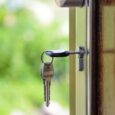Hardwood floors are timeless and never lose their charm. Most designers and house owners still choose them for their beauty and versatility. They are susceptible to damage if not given the correct care and attention. Even if the property is not in a hurricane or flood-prone area, extra moisture can harm it. Leaking pipes and other mishaps can cause standing water or significant water damage. If neglected, you might bid farewell to the floors quickly.
How Water Affects Hardwood Floors
Wood is made of fibers that easily take in and retain water. There are clear signs that reveal where the damage may be originating from. Knowing how to spot these can save your floors from irreversible damage.
Cupping
Cupping means the edges of the floorboards lift, and the middle is lower. It is the first sign suggesting a water problem on the floors. It generally means that moisture or direct water originates from beneath the floorboards. Considering that the bottom gets wetter, it swells, and the top curls inwards. It might mean a damaged pipe or extra humidity in the crawlspace below.
Crowning
When the middle of the floorboards is arched and the edges slope downwards, this is called crowning. It normally implies that the moisture content at the top is higher than at the bottom. The wood soaks up moisture and responds by swelling, which causes crowning. Frequent direct contact with water also causes crowning. This can be triggered by dripping sinks, entry and exit points, or defective appliances that utilize water.
Mold
Aside from the top and bottom surface areas, hardwood floors still have other seepage points. No matter how well-finished the floors are, water can find its way between joints or in any breaks in the finishing. If there is moisture left, mold can do more damage. It can stain the wood, cause warping, and cause rotting.
How to Save your Hardwood Floors
You can clean the floors using a shop vacuum cleaner and scrub the floors with detergent. Drying is very crucial and requires proper equipment. If you believe that this is a simple procedure, think again. If you are doubtful, think about getting professional help. Employing the services of a remediation company, like the Puroclean company, may even save you a substantial amount of money and spare you from the trouble of rebuilding floors. Here’s what’s in store:
Removing Water
Quick removal of standing water is guaranteed with equipment that can shorten work time. Also, professionals know where to look to ensure that damage will not continue.
Cleaning Surfaces
Remediation professionals utilize heavy-duty cleaning agents to remove dirt and oils and eliminate odors. Soil and other debris can also be eliminated without needing more water. Click to learn more about how the mitigation process works.
Drying All Moisture
Industrial-grade fans, blowers, and dehumidifiers can dry our remaining moisture. Drying has to be fast and thorough to avoid further seepage that can cause more damage.
Treating Mold
In the locations that reveal mold growth, experts clean them with cleaning agents, which will help eliminate further development. These cleaning agents will also eliminate the smell that comes with mold growth.





